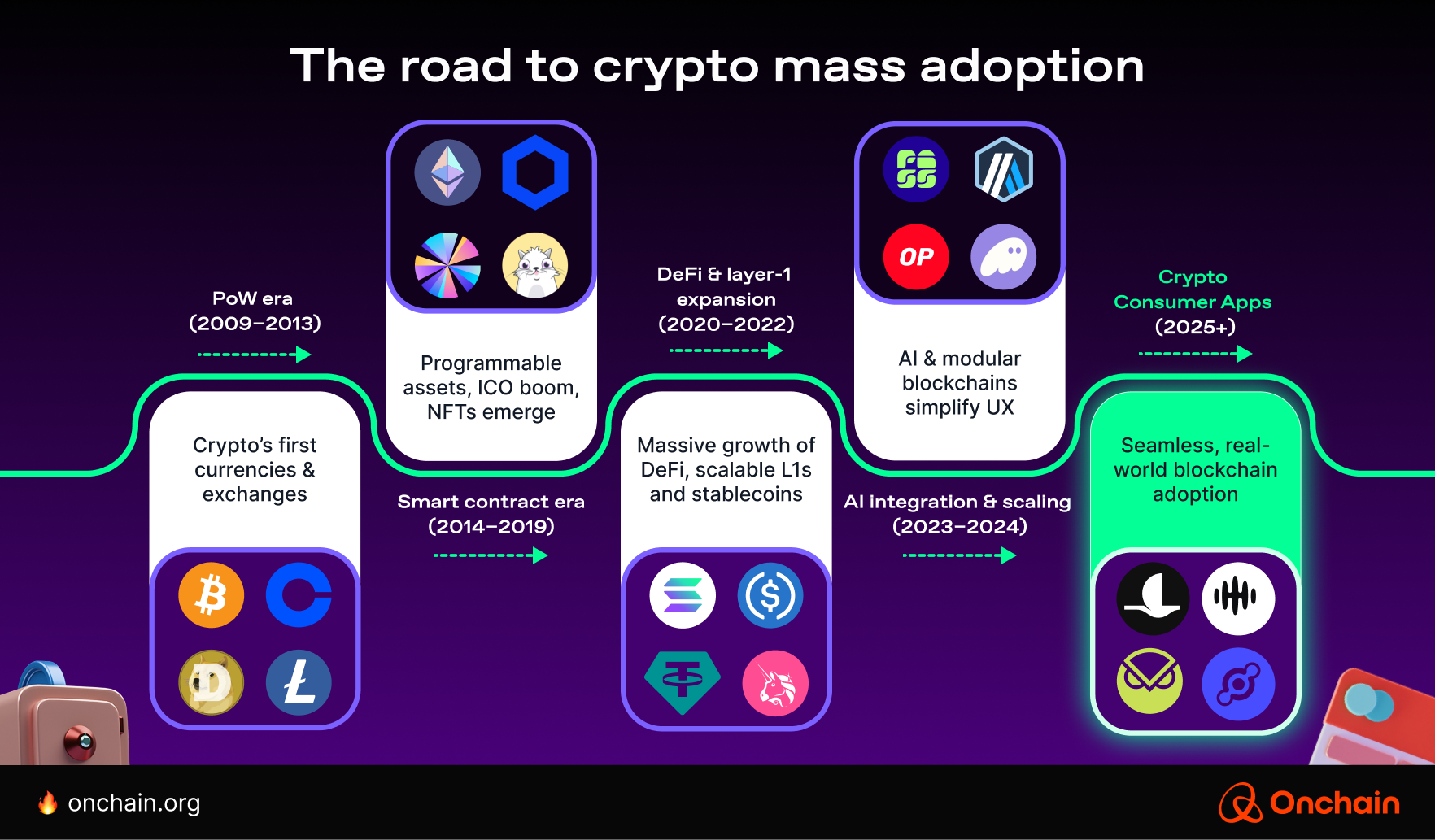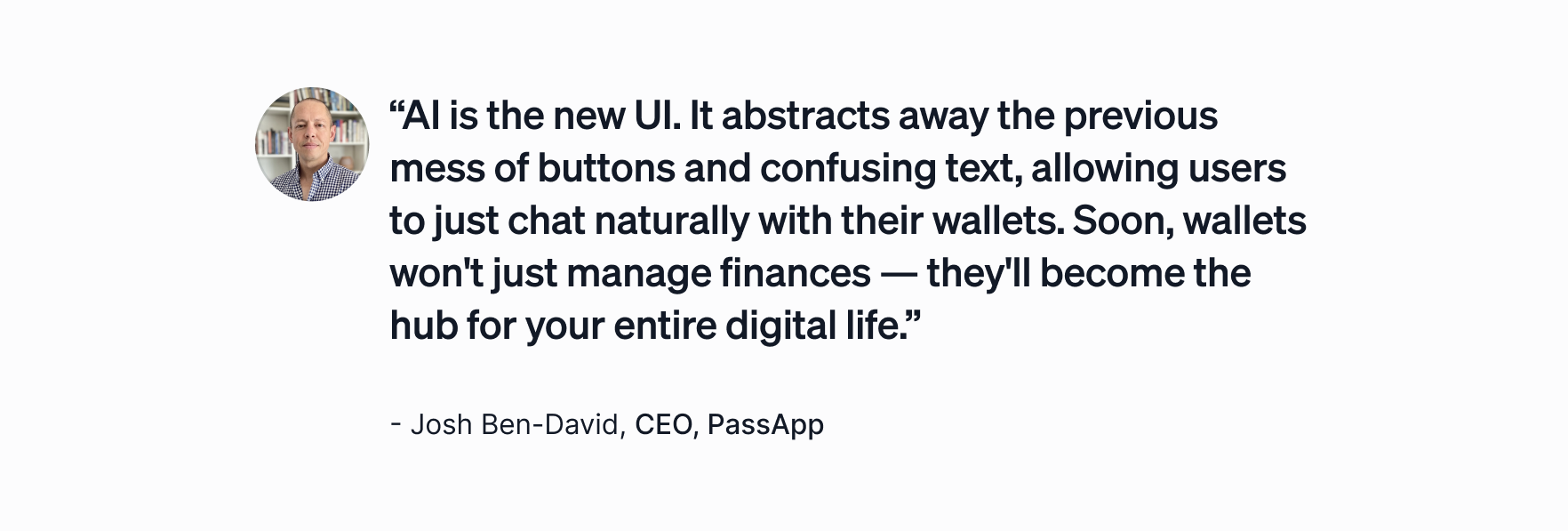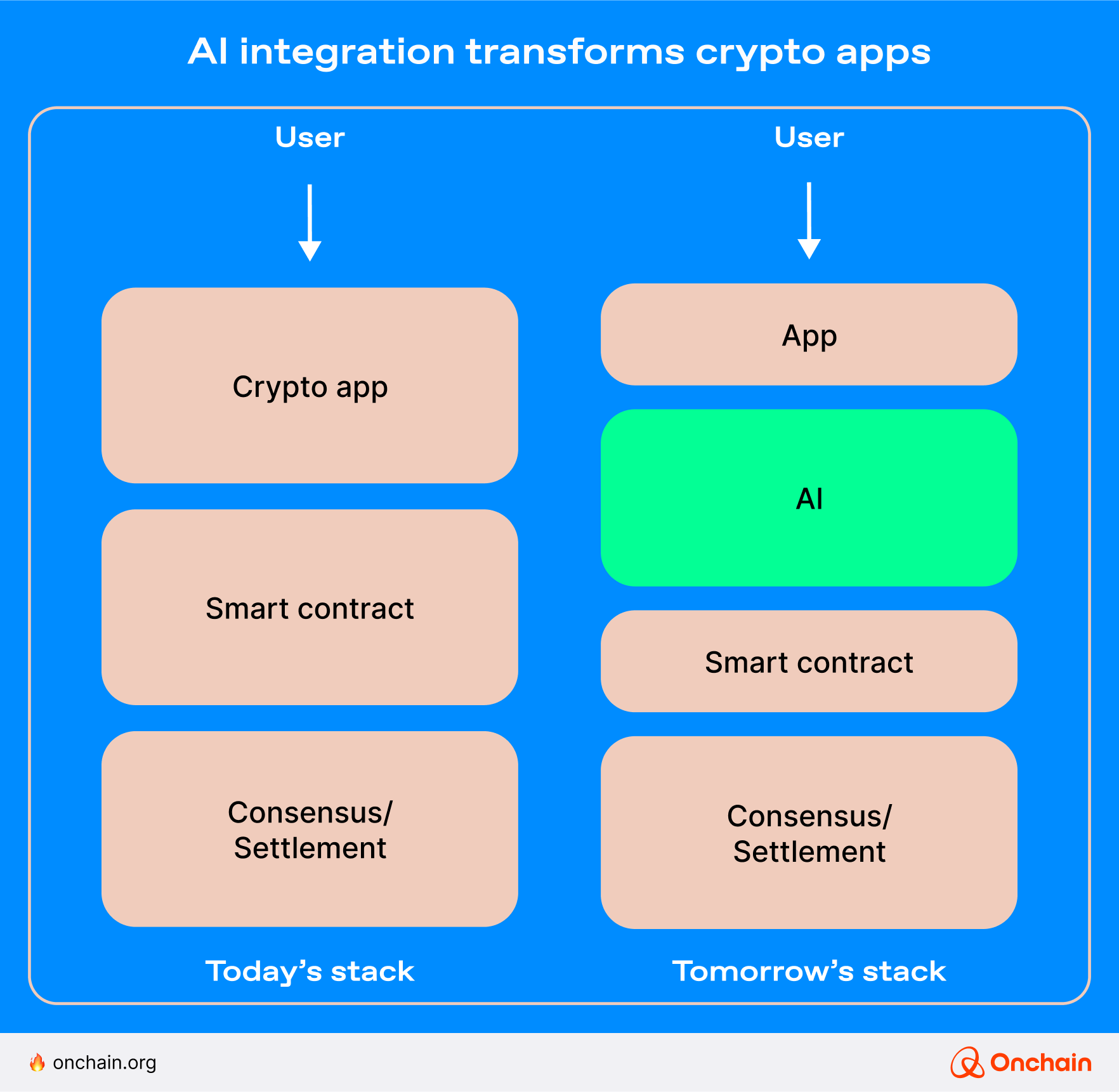Blockchain-based applications have consistently promised to revolutionize payments, gaming, digital ownership, and digital communication. Yet, despite repeated hype cycles and lofty expectations, Web3 apps have historically underdelivered, plagued by complex onboarding experiences, confusing wallets, volatile tokens, and speculative NFT markets that alienated mainstream users.
However, the landscape seems to be changing and there is hope on the horizon. Over the last five years, developments in infrastructure, user experience (UX), utility, regulation, and adoption of stablecoins have indicated that Web3 applications are finally overcoming critical obstacles.
Although blockchain apps haven’t yet achieved Web2-level ease-of-use across the board, the stage can now be firmly set for mass adoption of blockchain-based applications that are on par with Web2 apps. In fact, conditions have never been more favorable for builders, entrepreneurs, and founders to create crypto consumer applications that have a positive real-world impact.
From Wild West to Web2-level UX
What killed the first wave of blockchain apps?
Simple: People couldn’t use them.
🧩 Wallet setup was confusing.
💸 Fees were unpredictable and expensive.
⛓️ Tokens were volatile.
🧯 Trust was low.
⚖️ Regulation wasn’t there. According to our user survey, complicated onboarding (22.5%) and high transaction fees (23%) were the two biggest reasons people gave up on blockchain apps (see chart below).

But those barriers are finally being solved. Here’s why the stars have aligned for mass adoption.

There has never been a better time to build blockchain-based consumer applications
1. The blockchain infrastructure is ready for the masses
From 2014 to 2020, blockchain innovation centered around smart contract experiments and foundational infrastructure. But today, the landscape has transformed. Modern infrastructure has matured, becoming fast, affordable, and truly app-friendly.
Layer 1 chains like Solana and Sui, alongside Ethereum Layer 2 solutions such as Base, Lisk, and Soneium, have solved many of the speed and cost issues that previously plagued the blockchain experience. Apps built today can finally operate at speeds comparable to traditional Web2 platforms, eliminating frustrations that hindered early adoption.
For founders:
Robust infrastructure means less time wrestling with technical constraints and more focus on innovative product development and scaling to millions of users.
2. AI is making crypto apps feel … normal
Most people don’t want to worry about managing wallets, gas fees, or choosing networks — they simply want apps that work.
Artificial intelligence is making this a reality. As highlighted in our Consumer Apps Report, AI is reshaping user experiences throughout the blockchain ecosystem:
- Pass App and Coinbase Smart Wallet eliminate the need for confusing seed phrases.
- Transactions are automated and optimized seamlessly.
- AI-powered chatbots offer frictionless onboarding and ongoing support.
- Network selection is intelligently handled behind the scenes.

In short, AI is quietly removing complexity, transforming blockchain apps into intuitive applications that just happen to leverage blockchain technology.
For founders:
This shift in UX opens unprecedented market opportunities. You can now build blockchain-powered solutions that mainstream consumers actually enjoy using.

3. Utility replaces speculation
The old model was: Hold this token and hope it pumps.
Now it’s: Use this app, and it actually helps you.
- WiFi Map helps you find and earn from public WiFi.
- Blackbird rewards you for dining out in NYC.
- Helium Mobile lets you earn for powering a decentralized network.
- Gnosis Pay enables real-world crypto payments.
These aren’t gimmicks. They’re tools built around real-world behavior. And users are responding.
For founders:
Moving beyond speculation into real-world value is the key to sustainable growth and lasting user engagement. The market is now primed for meaningful innovation. Everything is now in place to build applications that can compete with Web2.
4. Stablecoins are mainstream
Volatile tokens were once the Achilles’ heel of blockchain adoption. Stablecoins changed the narrative, providing the stability needed for mainstream users to feel comfortable:
- Easy to understand and use, stablecoins power payments, loyalty programs, and yield products.
- Stablecoin transaction volume reached an astounding $22.5 tril in 2024, surpassing Visa’s global volumes.
- Apps like Gnosis Pay and SolCard showcase how effortlessly stablecoins integrate with everyday spending via smart wallets and debit cards.
It’s unsurprising that 25.91% of users now identify crypto payments as their primary Web3 use case.
For founders:
Stablecoins enable a vast range of consumer and business applications previously hindered by volatility concerns. Now’s the time to build on stable financial ground.
5. Regulation is catching up with technology
Earlier Web3 projects often operated in uncertain legal environments, stifling innovation and limiting scalability. Today, clear regulatory frameworks are emerging worldwide:
- Europe’s MiCA regulation provides comprehensive clarity.
- Regulatory sandboxes in the UAE encourage experimentation and safe innovation.
- Growing institutional acceptance, including from industry giants like BlackRock, highlights improving regulatory sentiment in the U.S. and globally.
Clear regulations don’t block innovation. They empower it. More and more Web3 projects can finally build scalable and compliant global solutions.
For founders:
This newfound regulatory clarity reduces risk and boosts investor confidence. Your Web3 startup can now safely start to scale and attract a global audience.
Final thought
Crypto infrastructure is built. AI onboarding is here. Stablecoins are usable. Regulation is providing a more secure environment for growth.
Yet, it’s important to recognize that while the pieces are finally in place, mainstream adoption isn’t guaranteed.
It must still be achieved.
Infrastructure alone won’t lead to mass adoption. Stablecoins and AI-powered UX won’t automatically transform consumer behavior.
Ultimately, it’s up to you (founders, entrepreneurs) and the broader Web3 community to capitalize on these favorable conditions. Build blockchain-powered consumer applications that truly resonate with users.
Turning potential into reality requires execution, creativity, and a deep understanding of real-world needs.
The next big crypto app won’t feel like a blockchain app at all. It’ll simply offer a better, faster, more intuitive experience that genuinely improves people’s lives.
The stage is set. Now it’s your move. You’ll find a breakdown of where blockchain apps are built (and how to plan for yours) in the next article.



